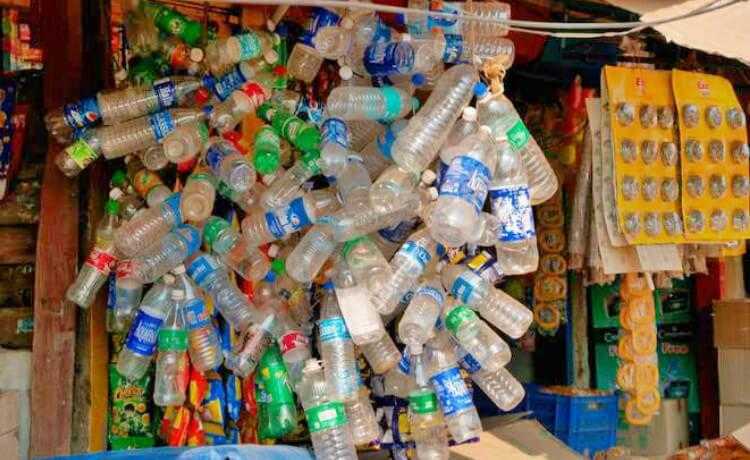Nitrites and Nitrates in Food and Possible Health Risks
The problem occurs when nitrite reacts with substances present in food. But there are sectors that say studies are not conclusive

Jess May Russell image in Unsplash
You've most likely heard of the health risks that ingesting meat products that have undergone the process of curing and adding nitrate and nitrite salts pose. These foods increase the risk factors for cancer in the digestive system, which is why it is highly recommended that you avoid processed foods in your meals. However, nitrate and nitrite are not only present in foods derived from meat, such as sausage, salami, sausage, ham, salami and bacon; some types of cheese, vegetables (often at much higher levels than in cured meats), water, and human saliva also contain the compounds.
Nitrate is bad?
There is a belief that nitrate (NO 3 - ) is bad for your health, but when we ingest this compound, it goes through the digestion process and part of it is eliminated in the urine; another is used for saliva production (that's why we find nitrate in saliva), so it doesn't accumulate in the body. What can happen is the formation of nitrite in the digestive tract by the reduction of nitrate, but this only occurs under specific conditions - it doesn't happen every time a person consumes nitrate. Even though it is not strongly harmful to health, the old saying that "the difference between a medicine and a poison is the dosage" is valid. There is a lethal dosage of nitrate for humans, but it is much higher than the levels we ingest. Thus, nitrate has a low toxicity.
And what about nitrite?
Nitrite (NO 2 - ), which despite having only a different letter in the name, is not the same as nitrate. According to epidemiological studies, nitrite is associated with methemoglobinemia (mainly in children). It works with hemoglobin, oxidizing iron to the ferric state, thus preventing the normal function of hemoglobin in transporting oxygen. However, this reaction is reversible due to the presence of an enzyme called methemoglobin reductase (MR) and, with the participation of the reducing agent NADH (Nicotinamide Adenine Dinucleotide), hemoglobin returns to its initial state and transports oxygen. But extra care must be taken with lactating children, as they do not have this enzyme.
Scratchs
But, after all, what do these two compounds have to do with the development of cancer?
Again the chemistry comes into play. The substance that can increase the risk factor for cancer is nitrosamines (carcinogenic substances). They are formed by the reaction between nitrite and amines present in food. But certain conditions are necessary for this to occur, and these conditions are found right in the stomach.
How to explain that the incidence of cancer in the digestive system in groups of vegetarian people is lower than in groups of omnivorous people, if vegetables have more nitrates than cured meat itself? The answer is simple and involves vitamin C (ascorbic acid) or even vitamin E: they offer an antioxidant effect, preventing the reaction of formation of nitrosamines - these vitamins are present in abundance in vegetables. Cured meats also have vitamin C, isoascorbic acid (erythorbate) and their salts are useful to improve color retention in cured products, but the amounts are lower compared to vegetables.
Currently, researches are turning to the demystification of the harm caused by nitrate, even suggesting citations about important functions of nitrate in the human body, mainly in defense against pathogens. However, there is still a certain contradiction in academia on the issue of dietary nitrates and nitrites (mainly from vegetables). There are groups of scientists who reject the link between the appearance of cancer in diets high in nitrates, saying the related research is not very conclusive.
However, when it comes to cured foods (especially processed meats), moderation is the key word. Residual nitrates and nitrites (added nitrite and nitrate salts that do not react with the myoglobin in meat) when consumed in excess provide the aforementioned problems. In addition, these products are high in salt and fat, which are also factors that help in the development of other diseases. Another precaution that must be taken is the consumption of cured products manufactured by hand, sold in open markets - the vast majority do not have certificates from regulatory agencies, such as RIISPOA and MAPA, which may present great risks of food poisoning, not only due to nitrates and nitrites , but also by pathogenic microorganisms.
Sources: Volatile Nitrosamines in Food; Accumulation of Nitrate in Vegetables and Human Health; The Issue of Nitrate in Hydroponic Lettuce and Human Health; Meat Cure; Evaluation of sodium nitrite content in fresh and cooked sausages commercialized in the state of Rio de Janeiro, Brazil; Nitrates and Nitrites in food: occurrence, absorption and toxic effect.










